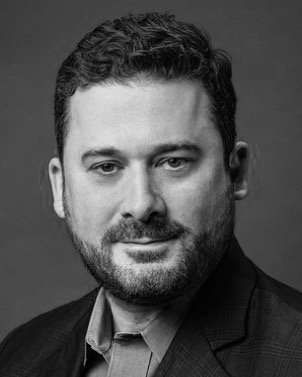Syrian rebels have overtaken a joint Russian-Syrian secret facility that they claim was a covert intelligence collection base. Opposition fighters say the post was used to snoop in on the communications of opposition groups -- and perhaps even the nearby Israelis.
Free Syrian Army officials, U.S. officials, and independent experts told The Daily Beast that the evidence of Russian involvement in the facility, just a few miles from Syria’s border with Israel, if verified, would show a level of Russian involvement in the Syrian civil war that was not previously known. Free Syrian Army officials posted several videos on YouTube showing both the outside and the inside of the facility, which the FSA captured over the weekend during a battle near Al Harah, south of Damascus, next to the Golan Heights.
The videos and accompanying photos show insignias representing a branch of Syrian intelligence and the Russian Osnaz GRU radio electronic intelligence agency. The FSA found photos and lists of senior Russian intelligence and military officials who visited the facility, pictures of Russian personnel running the base, and maps showing the location of Israeli military units. Israeli news reports earlier this year said the Russian government had upgraded an advanced surveillance and intelligence gathering station in that area which could snoop on Israel, large parts of Jordan, and western Iraq, potentially to warn Iran in advance of an Israeli strike. Initial reports said documents from the facility suggested the Russian equipment was used to spy on Israel, Saudi Arabia and Jordan.
U.S. defense officials told The Daily Beast the photos of the Russian insignia first shared on blogs were legitimate. But that evidence, at the same time, may not necessarily mean the facility captured by the opposition was controlled by Russia’s military; it could just mean that Russians were working there, as advisors or partners to Syrian troops.
Mark Galeotti, an expert on Russia’s military and intelligence services at New York University said the term “Osnaz” on the insignia just meant a special unit of any kind. “It’s the kind of unit that the Russians would have had there because Syria is not the easiest area to operate in, they are an element of the radio-technical intelligence boys who do this.”
Firas Al Hawrani, the official spokesman for the FSA in southern Syria, told The Daily Beast Monday that FSA forces had seen about 15 Russian personnel operating in the Al Harah area before the FSA took the facility, but they left before the area fell out of regime control.
“The Russians who were at the Al Harah mountain, the regime took them to Damascus by plane two weeks ago,” he said. Galeotti said these Russian advisers would specifically be working on intercepting radio communications of opposition figures. “They would be running an operation for detailed radio technical intelligence, we are not talking about intercepting telemetry and aircraft,” he said. “This is for eavesdropping on rebel radio communications. Cell communications are easier identified through other means. And this is also for identifying the presence of these units, which leads directly into targeting.” Russia has been one of Syria’s most important allies for years. The port of Tartus is Russia’s only naval base on the Mediterranean, for example. And since the civil war in the country broke out in 2011, Russia has provided the country with advisers and billions of dollars’ worth of heavy military equipment. Galeotti said Syria’s security services are good as “traditional secret police skills,” such as interrogation and bugging telephones. The facility taken over by the Syrian opposition, however, suggests the Russians gave the regime “a whole new capability,” Galeotti said. “A lot of the Syrians are very clumsy. Some of the more precise attacks in the last year have suggested a new sophistication.”
Sen. John McCain told The Daily Beast Monday that the apparent Russian involvement in the base, which was also reportedly tasked with collecting signals intelligence and communications of rebel groups, showed of the depth of Moscow’s collusion with Damascus in the Syrian civil war.
“If what they’ve recovered is true and I have no reason to believe it’s not, it really is very indicative of the significant involvement of Russia in this conflict,” he said. “It shows significant coordination, establishment of a facility they could use for coordination and intelligence capabilities including intercepts. It’s a pretty sophisticated operation there that they’ve uncovered.”
Meanwhile, in Northern Syria, ISIS continued a major assault on the city of Kobani near the Turkish border as Kurdish and tribal forces tried to repel them. Dr. Najmaldin Karim, the governor of Kirkuk, was in Washington last week asking U.S. officials to expand the airstrikes in both Iraq and Syria and to increase aid to the Kurdish forces in both countries.
Not only is ISIS advancing in Northern Syria, they are digging in their positions in several Iraqi cities, including Mosul and Ramadi, Karim told The Daily Beast in an interview. Gen. John Allen, whom President Obama appointed to coordinate the international coalition against ISIS, said in Baghdad that the drive to free key cities like Mosul may take as long as a year.
“A lot of the front lines are basically frozen,” said Karim. “The worst thing would be for the United States, the region, and for Iraq, would be if the situation stays like this and festers. These guys have been there since June. If it goes further, it becomes a way of life. It will become like Somalia.”







